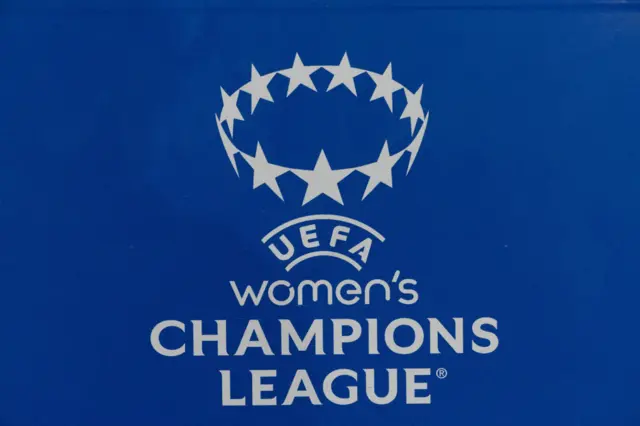The landscape of elite women`s club football is undergoing its most significant evolution yet. The UEFA Women`s Champions League (UWCL) is stepping into a revolutionary new era for its 2025-26 season, bidding farewell to its familiar group stage format and embracing an innovative 18-team `Swiss model` league phase. This seismic shift promises a surge in competitive fixtures, unprecedented drama, and an elevated global profile for the pinnacle of European women`s club competition.
The Dawn of a Sophisticated Era: Unpacking the `Swiss Model`
Gone are the days of neatly compartmentalized groups. The 2025-26 UWCL season introduces a single, unified league table featuring 18 formidable teams. In a design borrowed from its male counterpart, and indeed from chess tournaments, each team will navigate six unique opponents during this league phase – playing three matches at home and three away. This structure ensures a broader spectrum of matchups, pushing teams to adapt against diverse playing styles from across the continent.
The stakes are high. Points will be awarded under the standard footballing rubric: three for a win, one for a draw, and zero for a loss. At the conclusion of this intense league phase, the top four teams will earn a direct ticket to the coveted quarterfinals. Clubs finishing between fifth and twelfth place will engage in a two-legged knockout playoff, battling fiercely for the remaining quarterfinal berths. For those occupying positions 13 through 18, the tournament journey concludes, leaving no room for late heroics.
This innovative format is not merely a cosmetic change; it`s a strategic move designed to maximize competitive intensity and engagement. More matches against varied opposition mean greater challenges, more opportunities for upsets, and, crucially, a prolonged narrative for fans to follow.
The Crucible of the Draw: Setting the Stage
The foundational pairings for this ambitious new league phase were recently solidified in Nyon, Switzerland. The 18 clubs, having either qualified directly or navigated the rigorous preliminary rounds, were meticulously divided into three pots of six, their placement determined by UEFA`s club coefficient rankings – a testament to their historical performance and current stature.
The draw itself was a blend of precision and anticipation. Balls were manually drawn from separate bowls for each pot, with automated software ensuring the integrity of the process. Each club found itself drawn against two opponents from each of the three pots, ensuring a balanced challenge across the spectrum of seeded teams. Crucially, clubs from the same national association were prevented from facing each other in the league phase, maintaining domestic diversity, although up to two teams from any other single association could be drawn together.
Teams Ready for Battle: The Elite and the Ascendant
The roster of teams set to embark on this pioneering journey is a blend of established giants and ambitious newcomers. Nine teams had already secured their spots, showcasing the enduring powerhouses of European women`s football:
- Arsenal (England, reigning titleholders) – The standard-bearers, keenly watched as they defend their crown in a new format.
- Lyon (France) – A perennial titan, consistently at the forefront of the competition.
- Paris Saint-Germain (France) – Another French powerhouse with deep ambitions.
- Bayern Munich (Germany) – A formidable German contingent ready to challenge.
- Wolfsburg (Germany) – Known for their resilient performances.
- Barcelona (Spain) – The Spanish giants, a dominant force in recent years.
- Chelsea (England) – A consistently strong English contender.
- Benfica (Portugal) – Bringing Portuguese flair to the elite stage.
- Juventus (Italy) – The Italian champions, eager to make their mark.
Adding to this formidable lineup are the nine victors from the demanding third qualifying round, each having fought tooth and nail for their place:
- Paris FC (France)
- Real Madrid (Spain)
- Atlético de Madrid (Spain)
- Manchester United (England)
- Roma (Italy)
- Twente (Netherlands)
- Vålerenga (Norway)
- St. Polten (Austria)
- OH Leuven (Belgium)
A Calendar of Unforgettable Encounters
The 2025-26 UWCL season promises an extended spectacle of top-tier football. The league phase will span from October to December, setting a relentless pace for the competing clubs:
- Matchday 1: October 7-8
- Matchday 2: October 15-16
- Matchday 3: November 11-12
- Matchday 4: November 19-20
- Matchday 5: December 9-10
- Matchday 6: December 17
The knockout stages will follow, commencing in February with the play-offs, leading to the quarterfinals in March, semifinals in April, and culminating in the grand finale in May.
- Knockout Phase Play-offs: First leg: February 11-12; Second leg: February 18-19
- Quarterfinals: First leg: March 24-25; Second leg: April 1-2
- Semifinals: First leg: April 25-26; Second leg: May 2-3
- Champions League Final: May 22-24, Ullevaal Stadion, Oslo, Norway
Beyond the Pitch: The Vision for Women`s Football
This structural overhaul of the UEFA Women`s Champions League is more than just a logistical adjustment; it’s a profound statement of intent from UEFA. By adopting a more complex, engaging, and arguably more meritocratic format, the organization is signaling a clear commitment to elevating the status, competitiveness, and commercial appeal of women`s club football.
The `Swiss model`, while sounding like an elaborate banking scheme or a particularly intricate clockwork mechanism, is designed to generate more high-stakes matches earlier in the competition. This means fewer dead rubbers, more challenging opposition for every team, and ultimately, a more compelling product for broadcasters and fans. The increased visibility and heightened drama are expected to drive greater investment, attract larger audiences, and inspire the next generation of players and supporters.
As the countdown to the first league phase matches begins, all eyes will be on the UEFA Women`s Champions League. This new chapter promises not just a competition, but a spectacle, redefining what elite women`s club football can achieve on the global stage.

